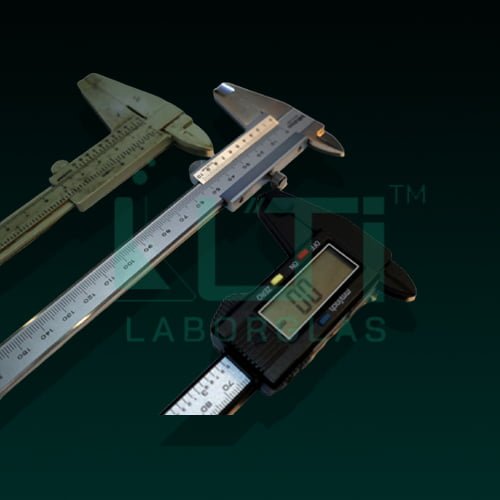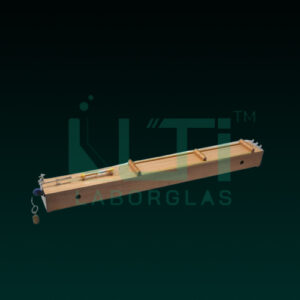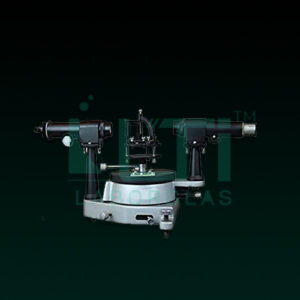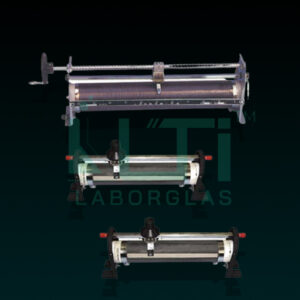Product Details:
| Brand | LTI-LAB |
| Color | Grey |
Comprising a knurled wheel, runs on a transversely mounted threaded spindle.
How to use vernier caliper
- The vernier caliper is an extremely precise measuring instrument; the reading error is 1/20 mm = 0.05 mm.
- Close the jaws lightly on the object to be measured.
- If you are measuring something with a round cross section, make sure that the axis of the object is perpendicular to the caliper. This is necessary to ensure that you are measuring the full diameter and not merely a chord.
- Ignore the top scale, which is calibrated in inches.
- Use the bottom scale, which is in metric units.
- Notice that there is a fixed scale and a sliding scale.
- The boldface numbers on the fixed scale are centimeters.
- The tick marks on the fixed scale between the boldface numbers are millimeters.
- There are ten tick marks on the sliding scale. The left-most tick mark on the sliding scale will let you read from the fixed scale the number of whole millimeters that the jaws are opened.
A Vernier Caliper is used for:
- Precise Length Measurement:
- Accurate Measurement: Provides precise measurements of length, width, or diameter.
- Inside and Outside Dimensions:
- Versatile Measurements: Measures both internal and external dimensions of objects.
- Depth Measurement:
- Depth Gauge Function: Enables accurate measurement of the depth of holes or objects.
- Fine Measurement:
- High Precision: Offers finer measurement resolution compared to regular rulers.
- Quality Control:
- Quality Assurance: Commonly used in industries for quality control and precision engineering.
- Educational Tool:
- Physics and Engineering Education: Used as a teaching tool to demonstrate measurement principles.






